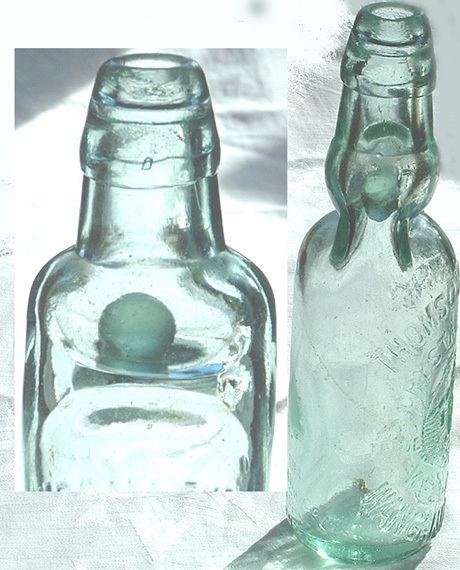 | ||
A Codd bottle is a type of bottle used for carbonated drinks. It has a unique closing design based on a glass marble which is held against a rubber seal, which sits within a recess in the lip..
Contents
History
In 1872, British soft drink maker Hiram Codd of Camberwell, London, designed and patented a bottle designed specifically for carbonated drinks.
The bottle
The Codd bottle was designed and manufactured to enclose a marble and a rubber washer/gasket in the neck. The bottles are filled upside down, and pressure of the gas in the bottle forced the marble against the washer, sealing in the carbonation. The bottle was pinched into a special shape to provide a chamber into which the marble was pushed to open the bottle. This prevented the marble from blocking the neck as the drink was poured.
Popularity
Soon after its introduction, the bottle became extremely popular with the soft drink and brewing industries mainly in Europe, India and Australasia, though some alcohol drinkers disdained the use of the bottle. One etymology of the term codswallop originates from beer sold in Codd bottles, though this is generally dismissed as a folk etymology.
The bottles were regularly produced for many decades, but gradually declined in usage. Since children smashed the bottles to retrieve the marbles, vintage bottles are relatively scarce and have become collector items; particularly in the UK. A cobalt coloured Codd bottle today fetches hundreds of British pounds at auction.
The Codd design is still used for the Japanese soft drink Ramune and in the Indian drink called Banta.
Due to the high gas pressure inside these bottles, they exploded violently if dropped hard (or flung intentionally)
